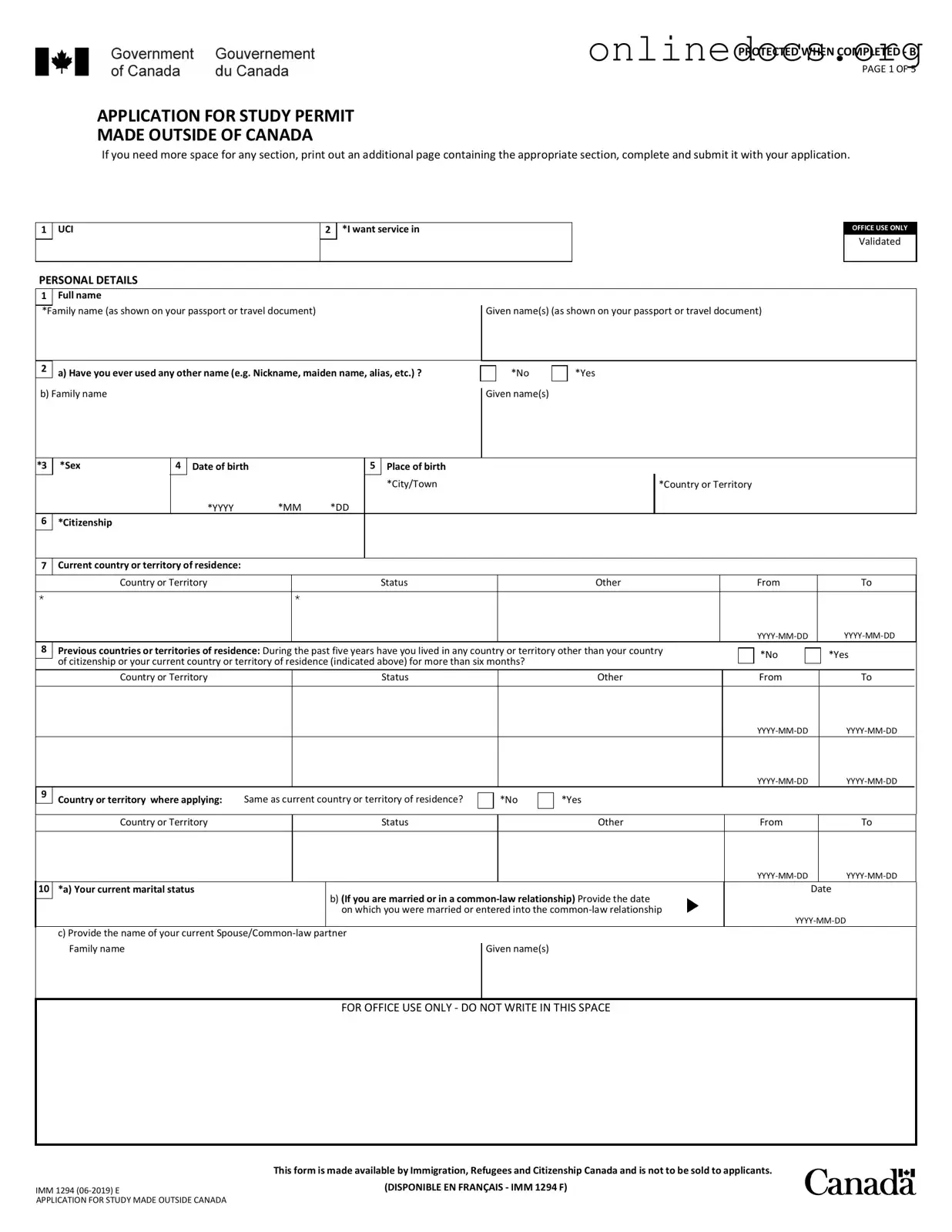The IMM 1294 form, which is the application for a study permit made outside of Canada, shares similarities with the Form I-20, issued by U.S. educational institutions. The Form I-20 is essential for international students wishing to study in the United States. Both forms require personal information, including the applicant’s name, date of birth, and details about their intended study program. Additionally, both forms necessitate proof of acceptance into an educational institution, which is crucial for obtaining the respective study permits.
Another document similar to the IMM 1294 is the DS-160 form, used for non-immigrant visa applications to the U.S. This form collects extensive personal information, including travel history and background information, akin to the IMM 1294. Both documents require applicants to disclose their educational background and details of their intended stay in the respective country, ensuring that the authorities can assess the eligibility of the applicant for a study permit or visa.
The Student Visa Application (Form VFS) for the United Kingdom also resembles the IMM 1294 form. Like the IMM 1294, this form requires applicants to provide details about their academic program and financial means to support their studies. Both forms aim to ascertain whether the applicant meets the necessary criteria for studying abroad, ensuring that they have the means and intent to comply with the visa conditions.
Similarly, the Australian Student Visa Application (Form 573) serves a comparable purpose. It requires detailed information about the applicant’s educational institution, course of study, and financial capacity. The IMM 1294 and Form 573 both focus on confirming the applicant's acceptance into a recognized educational institution and their ability to fund their studies and living expenses while abroad.
The Schengen Visa Application form also shares commonalities with the IMM 1294. This form is used for short-term stays in Europe, including for educational purposes. Both documents require applicants to provide personal details, travel plans, and financial information. They serve to ensure that applicants have a legitimate reason for their stay and the means to support themselves during their time in the respective countries.
Another related document is the Canadian Visitor Visa Application (IMM 5257). While primarily for tourism, this form also includes sections for individuals wishing to visit Canada for educational purposes. Both the IMM 1294 and IMM 5257 require applicants to provide personal information and details about their intended activities in Canada, ensuring that authorities can evaluate their eligibility for entry.
The Form I-539, used for changing or extending non-immigrant status in the U.S., is another document that resembles the IMM 1294. Both forms collect personal details and background information. They are designed to assess the applicant's current status and intentions, whether for study or other purposes, ensuring compliance with immigration regulations.
To effectively prepare for your future planning, utilizing a thorough Last Will and Testament template will guide you in articulating your final wishes and ensuring your estate is managed according to your preferences.
Lastly, the Application for Admission to the U.S. (Form I-94) shares some similarities with the IMM 1294 form. While the I-94 is primarily used for tracking arrivals and departures, it also collects information about the purpose of the visit, including educational intentions. Both forms emphasize the importance of accurately representing one's status and intentions to immigration authorities.
